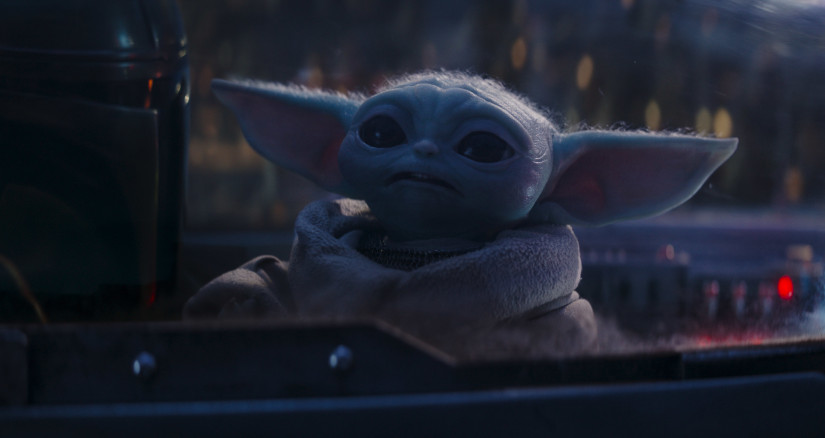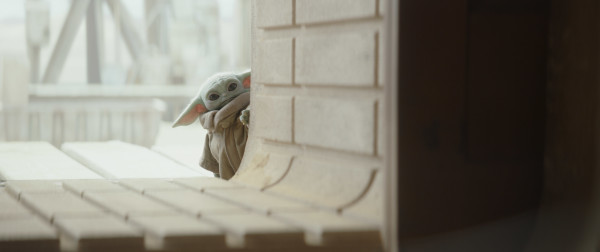
May the Marketing Insights Be with You
The year 2019 saw the return of the Star Wars franchise with The Mandalorian on Disney’sstreaming platform, Disney+. The show impressed audiences with visual effects and creative designs, but what really captivated viewers and made them want to travel to a galaxy far, far away was a tiny, unnamed, non-verbal character that captured everyone’s hearts: Baby Yoda.
My friends and colleagues were abuzz about what merch would go on sale for Black Friday – would there be Baby Yoda slippers? A plushie? A LEGO® kit? As consumers flocked to the stores (this was before the COVID pandemic, after all) they were disappointed in the dearth of desired merch. Finding Baby Yoda was like searching for water in the waste of Tatooine.
Disney had Mandalorian merch, of course, but in place of the cute alien with big eyes was the metallic mask of the show’s eponymous protagonist. It felt like 1996’s Jingle All the Way, where everyone wanted a Turbo Man figure, but stores were only stocked with Booster. And so, consumers turned to a source that could pivot and innovate rapidly—Etsy.
Filling the gap in the market were creators who could crochet, knit, and draw, among other skills. I was gifted Baby Yoda stickers myself, presumably from Etsy, all while Disney lost an estimated $2.7 million in revenue that holiday season by forgoing Baby Yoda merch.
Marketing Madness or Mastery?
To prevent leaks—after all, loose lips sink starships—Baby Yoda was kept under wraps to surprise viewers. And surprise them, he did! He was a sensation with his debut at the close of episode one, surpassing even Disney CEO Bob Iger’s expectations for the new character.
According to Disney, they knew Baby Yoda would resonate and, so decided to forgo merch in favor of a momentous surprise. But what they estimated to be a small sacrifice may have bitten them harder than intended. Thousands of Baby Yoda listings cropped up on Etsy, and many sales were made before Disney could get them shut down. When consumers couldn’t get what they wanted from one merchant, they flocked to another.
Disney has wide enough offerings and a stable enough base to draw consumers back after official merch was released, but do smaller companies? What about pet food companies? When you’ve already painstakingly transitioned your cat to a new brand she likes, do you go back to when your previous brand meets your needs again? The best thing a company can do to prevent that scenario from ever happening is to conduct proper research into their consumers’ needs and desires.

Photo courtesy of Lucasfilm Ltd.
Part of Your Strategy
Disney is no stranger to market research. They almost cut “Part of Your World” from the 1989 The Little Mermaid when test audiences were less than enthused. Successful market research is less about whatconsumers think and more about why and what else because of this? In the end, Disney kept the pivotal song; they saw there was more than met the eye. In another example, IHOP’s ridicule-inducing 2018 ‘IHOB’ stint netted the company quadrupled burger sales. But not everyone is as savvy—remember that New Coke also underwent market research. We are all in the ‘find out’ stage to see what Southwest is reaping with their new baggage policies. That’s why market research can’t just be done but has to be done right. Smaller companies can’t afford marketing blunders. That’s why it’s important to glean the key insights and not just validation .
Did keeping his character hush-hush before release make Baby Yoda a bigger sensation than he otherwise would have been? Perhaps it was the element of surprise that spurred his popularity. We know surprises can work—Beyoncé’s December 2013 surprise release, Beyoncé, made a huge splash, reaching iTunes No. 1 in 90 countries and shifting the industry to Friday releases for new music. Similarly, Taylor Swift surprise-dropped sister albums Folklore and Evermore in 2020 to both commercial and Grammy success. Surprise can create buzz, and buzz can lead to sales. Similarly, streaming platforms have started serializing shows again to maintain hype. Surprises are a gamble that can pay off, but only if you’re big enough to afford them. Market research allows smaller companies to control the odds.
While it’s fun to hypothesize Disney’s what-could-have-beens, many smaller companies don’t have that luxury. Missing the mark on what consumers want can lead to lost revenue, decreased customer satisfaction, and tanking market share. Disney can weather a season contesting Etsy shops, and Coca-Cola has the funds to try other cola iterations, but few companies have such deep pockets. Smartly executed research with keenly derived insights can make or break a product’s release and even a company.
The Force may be with you, but proper market research could make you more powerful than you can possibly imagine.
Follow us on LinkedIn for the latest updates on all things happening here at BSM Partners.
About the Author
Kait Wright is a Senior Analyst at BSM Partners in the Branding, Strategy, and Marketing practice. She has over five years of experience in consumer insights and market research and has worked in both the human and pet food industries. She has volunteered with a local TNR program, domesticating and fostering feral kittens. She earned her B.S. from Brigham Young University and lives in Utah with her two cats.
This content is the property of BSM Partners. Reproduction or retransmission or repurposing of any portion of this content is expressly prohibited without the approval of BSM Partners and is governed by the terms and conditions explained here.